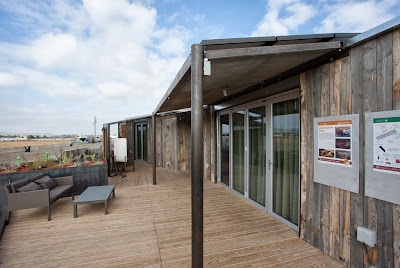Solar Decathlon Where It Belongs

The Solar Decathlon is being held in California at long last. The competition was first held in 2002, and features homes powered by rooftop solar panels, and built by teams from across the country and overseas competing to be the most sustainable in various categories. The overall winning team must design and build a home that meets the following general criteria: Is affordable, attractive, and easy to live in Maintains comfortable and healthy indoor environmental conditions Supplies energy to household appliances for cooking, cleaning, and entertainment Provides adequate hot water Produces as much or more energy than it consumes. Consider the "DesertSol" entry designed and built by the University of Nevada, Las Vegas (UNLV). The DeserSol house uses a solar thermal system to heat water and the home itself, photovoltaic panels to supply energy, and advanced engineering that reduces framing materials by nearly 20%. The entry will be on display at the Las




